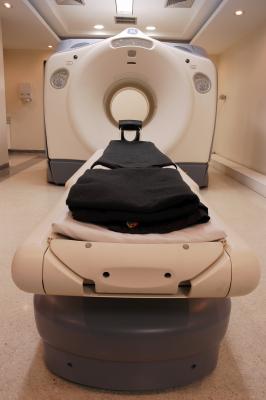
May 28, 2015 — The novel Ga-68-PSMA-ligand positron emission tomography/computed tomography (PET/CT) has substantially higher detection rates of prostate-specific membrane antigen (PSMA) in patients with biochemical recurrence after radical prostatectomy, according to a recent study. Discovering a recurrence early can strongly influence further clinical management, so it is especially noteworthy that this hybrid PSMA-ligand identified a large number of positive findings in the clinically important range of low PSA-values (<0.5ng/mL).
According to the Centers for Disease Control (CDC), prostate cancer is the most common cancer among men in the United States, after non-melanoma skin cancer. While many men with prostate cancer die from other causes, prostate cancer remains one of the leading causes of cancer death among men of all races. Treatment and survival after recurrence depend on many factors, but early detection of the recurrence is certainly key.
Matthias Eiber, M.D., corresponding author of the study, which was reported in The Journal of Nuclear Medicine, noted, "The study is the first to examine this highly promising PET tracer in the use of a homogeneous patient collective consisting of only those with biochemical recurrence after radical prostatectomy. It found superb detection rates compared to other tracers, like choline, or imaging modalities, like MRI [magnetic resonance imaging]. For patients, this means that the referring urologist can receive earlier and more precise information about the site and extent of metastatic disease. Physicians will also be better able estimate whether a PSMA-PET scan might be useful in a specific setting."
The study evaluated 248 patients with biochemical recurrence (median PSA level of 1.99ng/mL and a range of 0.2-59.4ng/mL) after radical prostatectomy. All were given contrast-enhanced PET/CT after injection of 155±27MBq Ga-68-PSMA-ligand. The detection rates were then correlated with PSA-level and PSA-kinetics. Influencing factors that were assessed include anti-hormonal treatment and primary Gleason score, as well as the contribution of PET and morphological imaging to the final diagnosis.
For 222 (89.5 percent) of the patients, the test detected higher than normal levels of PSMA. Whereas detection rates increased with higher PSA-velocity, no significant association could be found for PSA doubling-time.
In addition, Ga-68-PSMA-ligand PET (compared to CT) exclusively provided pathological findings in 81 (32.7 percent) patients. In 61 (24.6 percent) patients, it exclusively identified additional involved regions. And, for those with a higher Gleason score, detection efficacy was significantly increased (P = 0.0190).
Eiber stated, "These findings will certainly enhance the use of PET in the diagnostic workup of patients with recurrent prostate cancer. When regulatory hurdles and reimbursement issues are overcome, this tracer might gain significant acceptance beyond Europe."
For more information: www.snmmi.org


 December 04, 2025
December 04, 2025 









